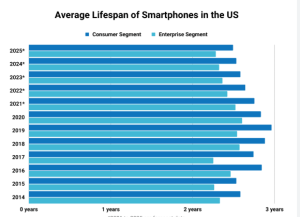
You interact with text generation models daily, whether you realize it or not. These AI systems create text that mirrors human communication. They power tools like chatbots, virtual assistants, and content creation platforms. The global AI text generator market is expected to reach $1 billion by 2028, growing at an impressive 17.8% annually. Their versatility in natural language tasks, such as translation and summarization, highlights their importance in countless industries. Neural networks and transformer architectures drive these models, enabling them to craft coherent and context-aware content.
Key Takeaways
-
Text generation models use smart AI to write like humans. They help in things like chatbots and making content.
-
Knowing how they are trained and using good data is key. This helps make AI text more accurate and trustworthy.
-
Special tools like attention mechanisms and transformers help models. They create clear and on-topic answers for many tasks.
Understanding Text Generation Models

What Are Text Generation Models?
Text generation models are advanced AI systems designed to create human-like text. These models analyze input data and generate coherent, contextually relevant responses. They rely on machine learning techniques and vast datasets to understand language patterns. For example, models like GPT-3 and ChatGPT can produce essays, summarize documents, or even simulate conversations.
These models excel at tasks like encoding and decoding. Encoding transforms input text into numerical tokens that the model can process. Decoding then generates meaningful output by predicting the next word or phrase based on the context. This process allows the models to produce text that feels natural and engaging.
|
Aspect |
Description |
|---|---|
|
Encoding |
Converts input text into a format the model can understand through tokenization. |
|
Decoding |
Generates meaningful output based on the encoded information, refining predictions with each generated token. |
|
Training Process |
LLMs are trained on large datasets using unsupervised learning, predicting the next word based on context. |
|
Tokenization |
Input text is broken into tokens using methods like Byte Pair Encoding (BPE) and WordPiece, which help manage vocabulary size. |
|
Optimization |
Techniques like Adam and LAMB minimize the loss function, with methods such as learning rate scheduling and gradient clipping to stabilize training. |
|
Regularization |
Techniques like dropout and weight decay prevent overfitting, enhancing generalization capabilities. |
|
Text Generation |
Involves predicting the next word using autoregressive generation, where the model iteratively generates text based on previous tokens. |
|
Self-Attention |
Allows the model to consider the entire context of input text, assigning weights to tokens based on relevance. |
|
Sampling Methods |
Techniques like Greedy Search, Beam Search, Top-k Sampling, and Top-p Sampling are used to generate diverse and coherent outputs. |
How Do Text Generation Models Work?
Text generation models operate by analyzing input prompts and predicting the next word or phrase. This process involves several key steps:
-
Tokenization: The input text is broken into smaller units called tokens. These tokens allow the model to process and understand the text.
-
Context Analysis: The model uses self-attention mechanisms to evaluate the context of the input. This ensures that the generated text aligns with the input's meaning.
-
Prediction: The model predicts the next token based on the context. It refines its predictions iteratively to produce coherent and relevant text.
-
Output Generation: The final output is generated by combining the predicted tokens into a complete response.
Machine learning plays a crucial role in this process. By training on large datasets, these models learn to recognize patterns and generate diverse text scenarios. This improves their ability to generalize and produce high-quality outputs. For instance:
-
Synthetic text enhances the generalization capabilities of language models.
-
Validation techniques like BLEU and ROUGE scores ensure the accuracy and relevance of generated text.
Tip: The effectiveness of text generation models depends on their ability to balance creativity and factual accuracy. Advanced techniques like sparse attention mechanisms and retrieval-augmented transformers help achieve this balance.
Applications of AI Text Generation
AI text generation has transformed various industries by automating complex language tasks. Here are some notable applications:
-
Content Creation: Businesses use AI to generate blog posts, product descriptions, and marketing copy.
-
Language Translation: AI models provide accurate translations by understanding the context of the source text.
-
Conversational AI: Chatbots and virtual assistants rely on text generation to simulate human-like conversations.
-
Document Summarization: AI models condense lengthy documents into concise summaries, saving time and effort.
-
Style Transformation: AI can convert casual spoken language into formal written text or transform plain text into legalese.
-
Using GPT-3 to simulate themed text data for bootstrapping text models.
-
Converting casual oral communication into formal written form.
These applications demonstrate the versatility of AI text generation. By automating repetitive tasks, these models enhance productivity and enable users to focus on more strategic activities.
Training Text Generation Models
The Role of Large Datasets
Large datasets play a critical role in training text generation models. They provide the foundation for these AI systems to learn language patterns and context. High-quality data ensures that the models generate accurate and coherent text. However, poor data quality can lead to significant issues:
-
Biased outputs may emerge if the training data contains inherent biases.
-
Inaccuracies in the dataset can result in factually incorrect responses.
-
Subtle errors might cause nonsensical or contextually inappropriate outputs.
Noise in the dataset directly impacts the model's performance. For instance, prediction quality can drop from 89% to 72% when the dataset contains excessive noise. On the other hand, high-quality data allows large language models to achieve optimal performance with smaller datasets. This reduces development costs and accelerates the training process, making AI text generation more efficient.
Machine Learning Techniques in Training
Machine learning techniques form the backbone of training text generation models. These techniques enable the models to identify patterns, understand context, and predict the next word in a sequence. Supervised and unsupervised learning are commonly used approaches. Supervised learning involves labeled data, while unsupervised learning allows the model to learn from raw text without explicit labels.
Optimization methods like Adam and LAMB help minimize errors during training. Regularization techniques, such as dropout and weight decay, prevent overfitting and improve the model's generalization capabilities. Additionally, tokenization methods like Byte Pair Encoding (BPE) and WordPiece break down text into manageable units, ensuring efficient processing.
Fine-Tuning for Specific Use Cases
Fine-tuning allows you to adapt a pre-trained model for specific tasks or industries. By exposing the model to domain-specific data, you can enhance its performance for targeted applications. For example, fine-tuning can improve AI text generation for legal, medical, or creative writing tasks.
Quantitative metrics help evaluate the effectiveness of fine-tuning. Metrics like ROUGE, BertScore, and cosine similarity measure the quality of generated text. BertScore, in particular, stands out for its ability to assess semantic meaning using contextualized embeddings. These metrics provide valuable insights into how well the model performs after fine-tuning, ensuring it meets the desired standards for accuracy and relevance.
How Models Generate Text
Analyzing Input Prompts
When you provide a prompt, such as “Explain the benefits of renewable energy,” the model begins by analyzing the input. It identifies the context, intent, and key elements of your request. This step ensures the generated text aligns with your expectations. Large language models (LLMs) achieve this by learning patterns, grammar, and structure from billions of words during training. They don’t memorize responses but recognize patterns to create coherent outputs.
Research shows that prompt styles significantly impact the accuracy of text generation. For example, structured prompts like JSON or YAML improve the model's ability to adhere to predefined attributes. This approach enhances the reliability of the response, even when dealing with complex inputs.
Predicting the Next Word
After analyzing the prompt, the model predicts the next word in the sequence. This process relies on statistical probabilities and context awareness. For instance, if the input is “The sun rises in the,” the model predicts “east” based on its training data. A Pearson correlation coefficient of 0.61 highlights the strong alignment between next-word prediction and human brain patterns, showcasing the model's reliability.
To generate diverse and accurate responses, models use sampling methods like Top-k Sampling, Top-p Sampling, and Beam Search. These techniques balance creativity and control by selecting tokens based on probability thresholds or exploring multiple sequences simultaneously.
|
Sampling Method |
Description |
|---|---|
|
Top-k Sampling |
Considers the top-k most likely tokens, promoting diversity by discarding unlikely tokens. |
|
Top-p Sampling |
Selects tokens until a cumulative probability exceeds a threshold, balancing diversity and control. |
|
Beam Search |
Explores multiple sequences based on a beam width parameter, allowing control over randomness. |
Producing Coherent Responses
The final step involves combining predicted words into a coherent response. Metrics like BLEU, ROUGE, and MOVEScore evaluate the quality of the generated text. BLEU measures the overlap of n-grams between the generated and reference texts, while ROUGE assesses summarization quality. MOVEScore provides a naturalness score, ensuring the response feels human-like.
|
Metric |
Description |
Purpose |
|---|---|---|
|
MOVEScore |
Provides a score between 0 and 1, indicating alignment between texts. |
Assesses naturalness and coherence. |
|
BLEU |
Measures the overlap of n-grams between generated and reference texts. |
Evaluates translation quality and coherence. |
|
ROUGE |
Compares the overlap of words and phrases in generated text. |
Assesses summarization quality and coherence. |
High-quality AI text generation depends on these validation metrics. They ensure the response aligns with the input prompt and maintains fluency, coherence, and relevance.
Core Technologies Behind AI Text Generation

Neural Networks in Text Generation
Neural networks form the backbone of modern AI text generation. These systems mimic the way your brain processes information by using interconnected layers of nodes, or “neurons.” Each layer analyzes data and passes it to the next, enabling the model to learn complex patterns in language. This process allows neural networks to generate high-quality text that feels natural and coherent.
For example, advanced models like KBAtt incorporate external knowledge to improve the accuracy of generated text. Studies show that this approach enhances fidelity across various datasets, including Wikipedia. Another innovation involves encoder-decoder models, which carefully process input data to produce better results. These advancements demonstrate how neural networks continue to push the boundaries of AI text generation.
|
Study Focus |
Findings |
Methodology |
|---|---|---|
|
External Knowledge Integration |
KBAtt improves fidelity of generated text by incorporating external knowledge. |
Experimental results on twenty-one Wikipedia datasets show consistent improvement over state-of-the-art models. |
|
Encoding Methods |
A novel encoder-decoder model outperforms existing models by carefully encoding input data. |
Evaluated through extensive experiments on WikiBio and E2E datasets, showing superior performance. |
Metrics like BLEU and F-Score evaluate the performance of neural networks in generating text. These metrics ensure that the output aligns with human expectations for fluency and coherence. By leveraging neural networks, you can achieve remarkable results in text generation tasks.
Transformer Architectures and Their Impact
Transformer architectures revolutionized AI text generation by introducing a more efficient way to process language. Unlike traditional models, transformers analyze entire sentences at once, capturing relationships between words regardless of their position. This innovation allows transformers to generate text that is both contextually accurate and highly coherent.
The impact of transformers is evident in their performance. For instance, GPT-3, a transformer-based model, showcases versatility across various natural language processing tasks. It can write essays, summarize articles, and even simulate conversations. Research also highlights how transformers outperform older models like RNNs in machine translation tasks. They process large datasets faster and deliver superior results.
|
Evidence Description |
Source |
Year |
|---|---|---|
|
Transformers achieved state-of-the-art results in machine translation tasks, outperforming RNNs. |
Vaswani et al. |
2017 |
|
Transformers can be trained on large datasets significantly faster than RNNs. |
Jia et al. |
2016 |
|
Demonstrated versatility of GPT-3 across various NLP tasks. |
Brown et al. |
2022 |
One notable transformer model, U-ViT, outperforms larger models like SDXL’s UNet in generating high-quality text. This achievement underscores the transformative power of this technology in AI text generation.
|
Model |
Parameters |
Performance Comparison |
|---|---|---|
|
U-ViT |
2.3B |
Outperforms SDXL’s UNet and larger models |
|
PixArt-α |
N/A |
N/A |
|
LargeDiT |
N/A |
N/A |
By adopting transformer architectures, you can harness the full potential of AI for text generation, ensuring faster processing and better results.
Attention Mechanisms for Context Awareness
Attention mechanisms play a crucial role in improving the context awareness of AI text generation models. These mechanisms allow the model to focus on the most relevant parts of the input text, ensuring that the output aligns with the intended meaning. For example, when translating a sentence, attention mechanisms help the model identify which words in the source text are most important for generating the target text.
One key advantage of attention mechanisms is their ability to handle long sequences. Traditional models like RNNs often struggle with vanishing gradients, which can lead to a loss of context in lengthy texts. Attention mechanisms address this issue by assigning weights to different parts of the input, ensuring that the model retains important information throughout the generation process.
Multi-head attention further enhances context awareness by allowing the model to focus on multiple aspects of the input simultaneously. This capability improves the model's ability to recall information and generate coherent responses. For instance:
-
Attention mechanisms enhance the understanding of context, which is vital for tasks like language translation.
-
They improve the handling of long sequences, addressing challenges faced by older models.
-
Multi-head attention enables the model to attend to different parts of the input at once, boosting accuracy and relevance.
By incorporating attention mechanisms, you can ensure that your AI text generation models produce high-quality text that is both accurate and contextually appropriate.
Comparing AI Text Generation to Traditional Tools
Differences in Functionality
AI text generation models differ significantly from traditional tools in how they process and create content. Traditional tools rely on predefined rules and structured data to perform tasks. For example, chatbots powered by traditional AI provide responses based on fixed scripts. In contrast, generative AI models analyze large datasets to learn patterns and generate new, high-quality text. This allows them to adapt to various tasks, such as creating creative content or engaging in natural conversations.
|
|
Generative AI |
Traditional AI |
|---|---|---|
|
Focus |
Creates new content. |
Performs tasks based on predefined rules. |
|
Approach |
Learns patterns from large datasets. |
Relies on specific rules with explicit instructions. |
|
Adaptability |
Adaptable to a wide range of tasks. |
Task-specific, requires retraining. |
|
Interaction |
Natural, human-like conversations. |
Responses based on predefined rules. |
|
Learning |
Trained on unlabeled data. |
Supervised learning on labeled data. |
|
Transparency |
Less transparent due to complex algorithms. |
More transparent due to predefined rules. |
Generative AI models also require diverse datasets to function effectively, while traditional tools depend on structured data. This distinction highlights the flexibility and creativity of generative AI compared to the rigid nature of traditional tools.
Advantages of AI Models
AI text generation models offer several advantages over traditional tools. They excel at producing natural and context-aware text, making them ideal for applications like content creation and conversational AI. Their ability to learn from vast datasets enables them to handle complex language tasks, such as summarization and translation, with remarkable accuracy.
You can also benefit from their adaptability. Unlike traditional tools, which require frequent updates to handle new tasks, generative AI models can quickly adjust to different contexts. For instance, they can switch from writing formal business reports to crafting creative stories without additional training. This versatility saves time and resources, making them a valuable asset in various industries.
Challenges and Limitations
Despite their advantages, AI text generation models face challenges. One major issue is their reliance on large datasets. Poor-quality data can lead to biased or inaccurate text, which may affect the reliability of the output. Additionally, these models often lack transparency. Their complex algorithms make it difficult to understand how they generate specific responses.
Another limitation is their tendency to produce text that sounds plausible but may lack factual accuracy. This can be problematic in applications requiring precise information, such as legal or medical writing. You must carefully evaluate the generated text to ensure it meets your standards for accuracy and relevance.
Note: While AI models excel at generating creative and diverse text, they are not perfect. Understanding their limitations helps you use them more effectively.
Text generation models are changing how you interact with language. Neural networks and transformers help these models create coherent and meaningful text. Their ability to adapt makes them valuable across industries. You can expect these models to continue evolving, offering innovative solutions for communication, creativity, and problem-solving in the future.
FAQ
What makes AI text generation models different from traditional tools?
AI models learn patterns from large datasets, enabling them to generate creative and adaptable text. Traditional tools rely on fixed rules, limiting their flexibility and scope.
How do text generation models ensure context relevance?
These models use attention mechanisms to focus on key parts of the input. This ensures the generated text aligns with the context and intent of your prompt.
Can AI text generation models replace human writers?
AI models assist with repetitive tasks and enhance productivity. However, they lack human creativity, emotional depth, and critical thinking, making them complementary rather than replacements.








